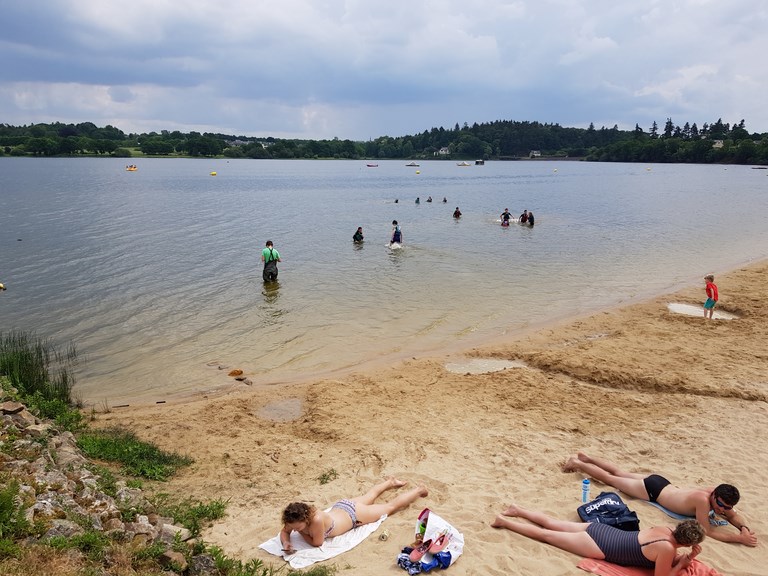 The University of Rennes 1 studied the phytoplankton dynamics of Lac au Duc before the experimental curative actions on the bathing area. Their mission is to determine how cyanobacteria concentrations evolve in this part of the lake, to evaluate the impacts of treatments according to the species present and their number.
The University of Rennes 1 studied the phytoplankton dynamics of Lac au Duc before the experimental curative actions on the bathing area. Their mission is to determine how cyanobacteria concentrations evolve in this part of the lake, to evaluate the impacts of treatments according to the species present and their number.
Cyanobacteria are naturally present in aquatic environments and develop further under conditions of light and high temperature combined with an excess of nutrients in the environment. Phosphorus is stored and released by sediments in Lac au Duc and brought with soils by the river. The concentration of cyanobacteria bloom is too much during the summer months resulting in the Regional Agency of Health recommending closure for bathing as a health and safety measure.
The first water samples were takenon May 29th, 2018, during the heat wave. The quantities of cells in the bathing area (officially opened as from July 1st) amount to 1 million and more cynaobacteria per ml, or 10 times more than the alert thresholds of the ARS. These results, are not surprising for the usual site dynamics, giving all the more justification for an intervention before the summer season commences to contain levels of cyanobacteria in the safety thresholds. It is hoped that the expected storm rains in the coming days should improve the situation.


